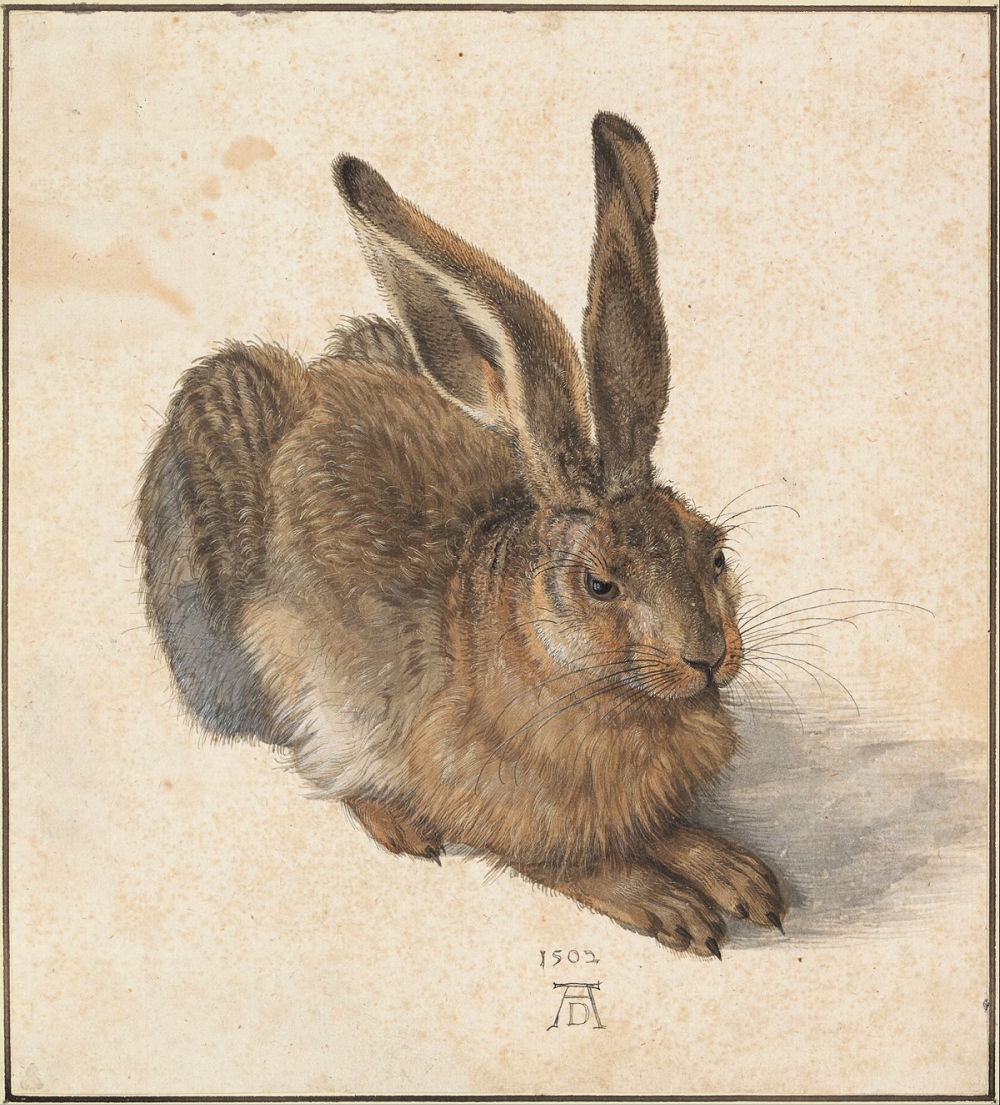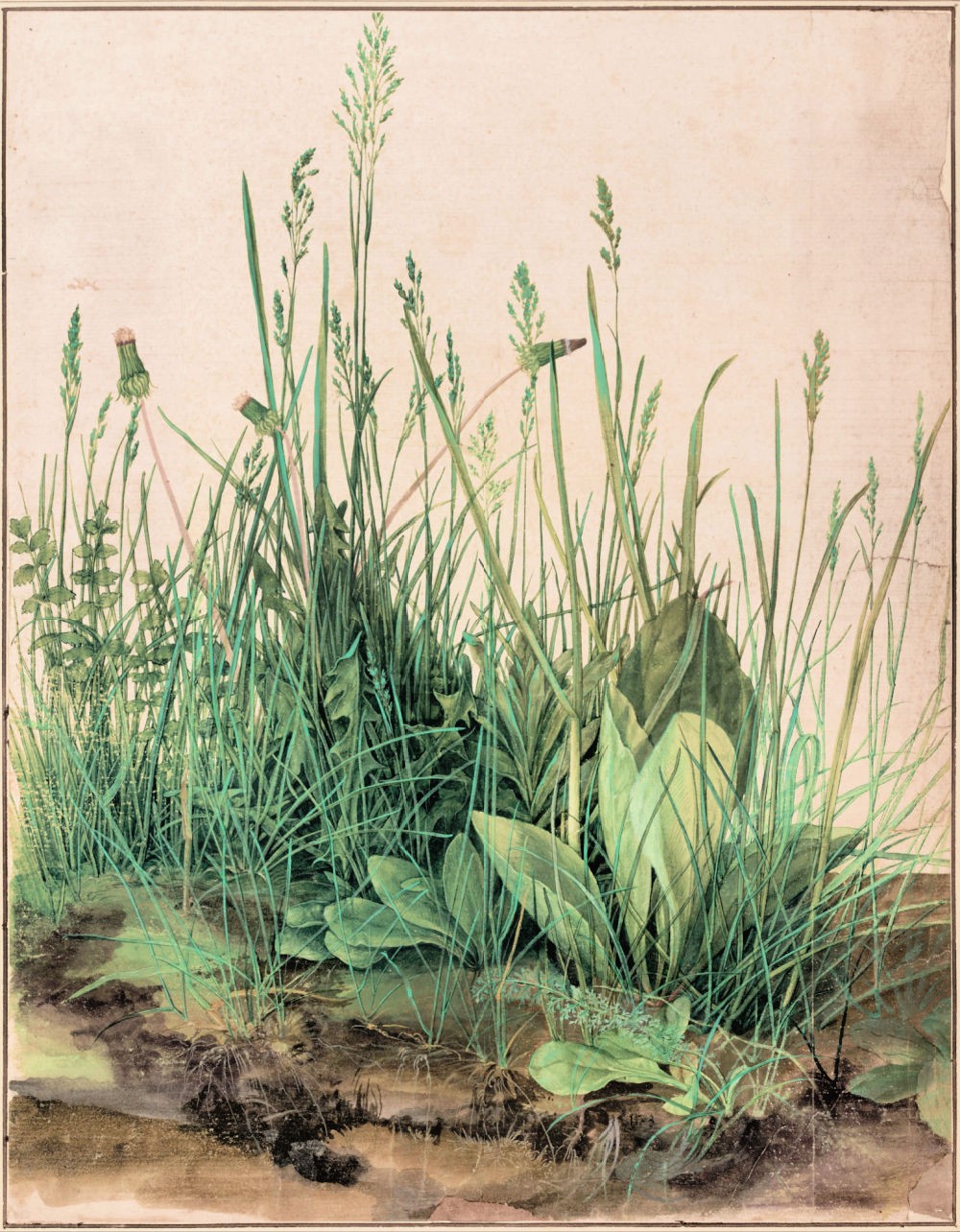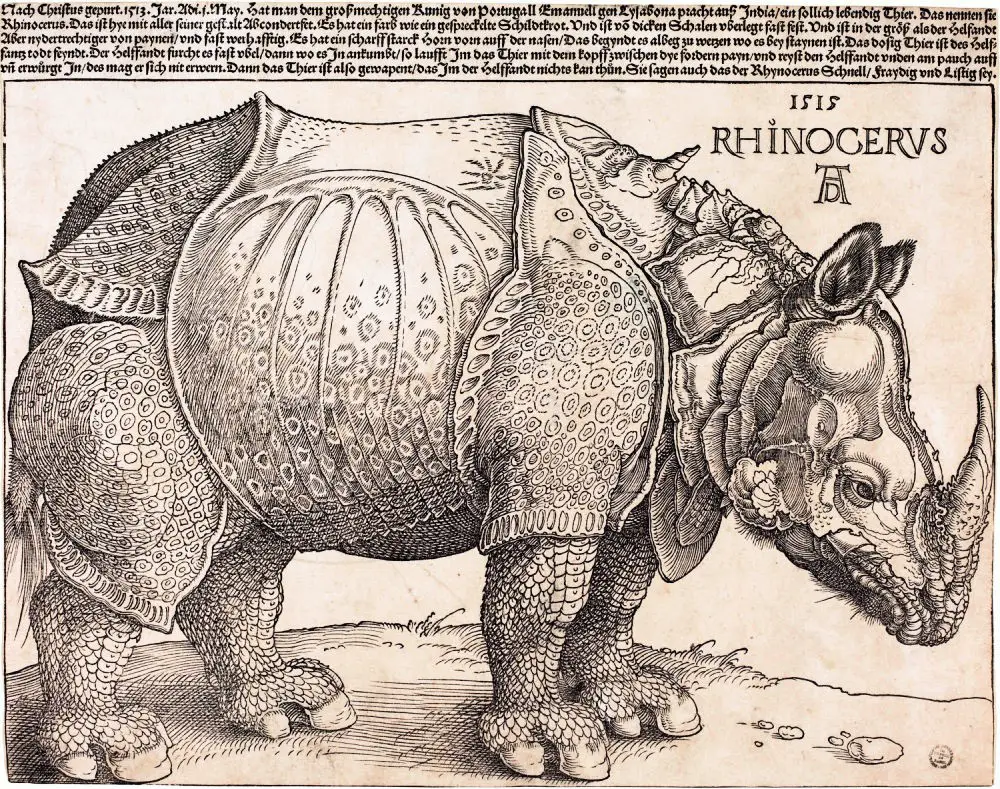Young Hare
In 1502, Albrecht Dürer, a renowned German artist, created a masterpiece in his watercolor and body color workshop – Young Hare. This exquisite painting is celebrated for its exceptional level of observational detail, with the subject presented in almost photographic precision. While typically titled ‘Young Hare’, the portrait reveals a mature hare, showcasing Dürer’s skill in rendering the subtle variations in fur texture and tone. To achieve this level of realism, Dürer adapted traditional shading techniques to convey the hare’s distinctive lighter and darker patches, deftly capturing the subject’s essence. Despite the challenges posed by depicting a multicolor, multi-textured subject bathed in warm golden light, which cast its glow from the left side, highlighting the ears and the hare’s running body hair, Dürer produced not only an astoundingly detailed, scientifically-accurate study but also imbued the artwork with a sense of warmth and depth.
Nighthawks
In Edward Hopper’s iconic 1942 oil on canvas painting, Nighthawks, four figures sit alone at a downtown diner late at night, their faces illuminated by the restaurant’s warm glow through an enormous glass window. Beyond this oasis of human activity lies a desolate and forsaken cityscape, bathed in the cool, distant light of the urban jungle. This seminal work is often regarded as the apotheosis of existential art, powerfully capturing the sense of alienation and loneliness that defines modern city life.
Starry Night
Starry Night, one of the most renowned masterpieces in the world, has become an ubiquitous presence in popular culture. Its iconic image adorns a vast array of everyday items, from coffee mugs and t-shirts to towels and magnets. While its widespread appeal might lead some to assume that the painting’s fame has eclipsed that of its creator, Vincent van Gogh, the truth is that Starry Night’s enduring popularity is a testament to the timeless beauty it embodies. Painted during his time at Saint-Paul-De-Mausole in 1889, this breathtaking work of art continues to captivate audiences worldwide, its universal appeal a reflection of its creator’s genius.
The Potato Eaters
Vincent van Gogh’s The Potato Eaters, an oil work created in April 1885 at Nuenen, Netherlands, is a testament to his artistic growth. On display at Amsterdam’s Van Gogh Museum, this piece was intentionally crafted as a showcase for the artist’s emerging skills as a figure painter. In his quest to prove himself, van Gogh chose a challenging subject – depicting farm life in all its harsh reality. The peasants’ rugged cheeks and bony hands are a telling reflection of this, underscoring the struggles faced by those working the land.
Great Piece of Turf
In 1503, Albrecht Dürer created his watercolor masterpiece, The Great Piece of Turf, in his Nuremberg workshop. This intricate painting showcases a diverse array of natural plants, including dandelion and larger plantain, which were meticulously rendered to inspire the artist’s future engravings and oil paintings. Interestingly, this piece was painted roughly a year after Dürer’s detailed study of a young hare, highlighting his fascination with the minutiae of nature. The Great Piece of Turf measures 40.8 x 31.5 cms, featuring a range of flora, including various types of meadow grass, plantain, speedwell, and daisy leaves, all depicted slightly larger than life-size.
San Giorgio Maggiore at Dusk
In 1908, Claude Monet completed his oil painting ‘San Giorgio Maggiore at Dusk’, now owned by the National Museum Cardiff, Wales’ premier art gallery. The original piece measures 65.2cm × 92.4cm and is rendered on canvas. This work showcases Monet’s skill and artistic vision, serving as a prime example of his oeuvre. Interestingly, ‘San Giorgio Maggiore at Dusk’, also known as ‘Monet’s Sunset in Venice’ or ‘Sunset in Venice’, was created during the fall season of 1908 while Monet was visiting Venice with his wife Alice, having arrived by chauffeur-driven automobile.
The Tragedy
Pablo Picasso’s enigmatic paintings often hid secrets beneath their surfaces, and ‘The Tragedy’ is no exception. This 1903 masterpiece features three figures on a beach, with the man and woman gazing down at the scene unfolding before them. The young one, seemingly oblivious to the drama, appears small and insignificant in the face of the adults’ distraction. Rather than referencing a specific event, ‘The Tragedy’ is an abstract portrayal of emotional turmoil, leaving the viewer to fill in the narrative gaps. Today, this thought-provoking artwork can be found at the National Art Gallery in Washington DC, where it continues to captivate audiences with its timeless themes and symbolism.
Durer’s Rhinoceros
Since its debut in 1515, Albrecht Dürer’s woodcut of an Indian rhinoceros has remained a beloved and enduring image. Over the course of more than a century, eight printed copies were created from the original woodblock, making it one of the most reproduced and influential prints of its time. For centuries to come, artists would draw inspiration from Dürer’s precise rendering, incorporating it into their own works as a representation of the majestic creature. Interestingly, the accompanying text indicates that the rhinoceros depicted was actually given as a gift to King Manuel I by Goa, Portugal – a rare and extraordinary occurrence in Europe at the time. The animal itself had never been seen by Dürer, yet his depiction remains remarkably accurate, likely informed by accounts and descriptions of the creature that arrived in Nuremberg during his lifetime.
Woman with a Parasol
In this enigmatic painting, Monet masterfully captures the essence of a casual family outing rather than presenting a formal portrait. The scene unfolds with Camille and their son Jean momentarily halting their stroll to pose for a photograph. By adopting an unconventional low vantage point, Monet invites the viewer into his world, elevating Camille to a nearly iconic status as she dominates the upper regions of the canvas. Her flowing skirts seem to dance in the breeze, while Jean’s smaller figure provides a charming counterbalance to the overall composition, infusing the piece with a sense of dynamic movement.









